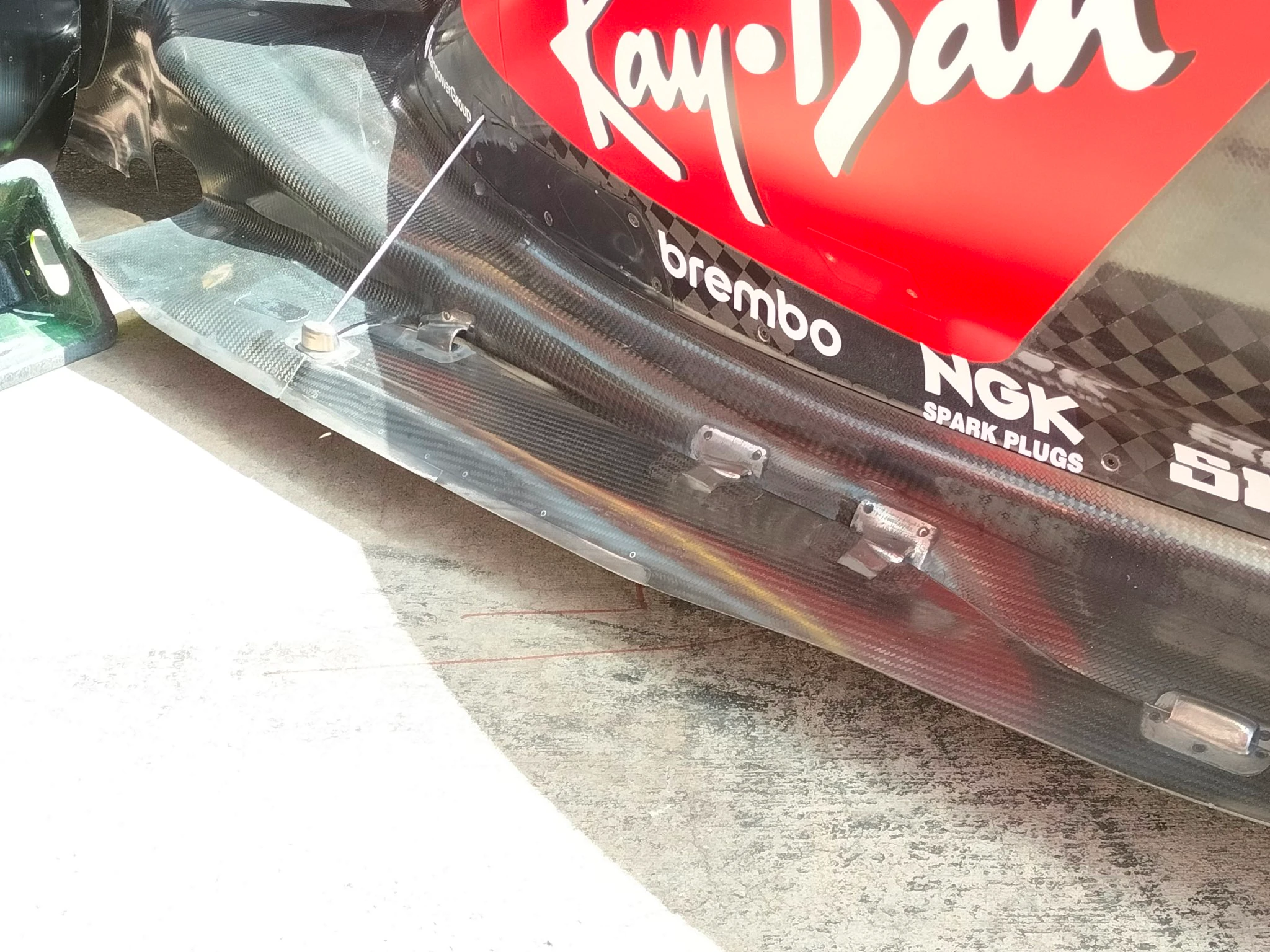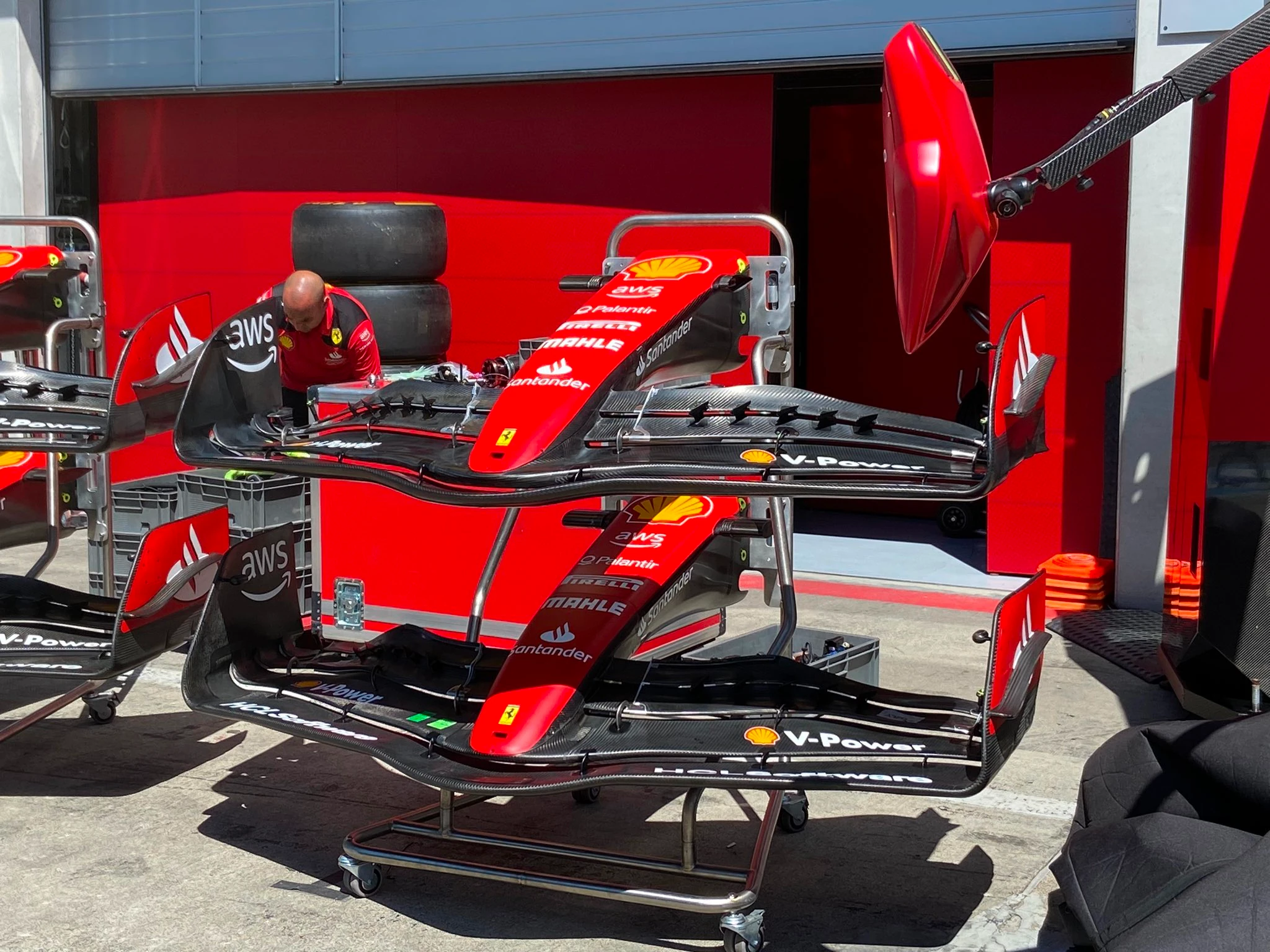
Ferrari: new aerodynamic package to regain the second place behind Red Bull!
Charles Leclerc's second place in the Austrian Grand Prix, combined with what could have been Carlos Sainz's third in luckier conditions, are to be considered the best performance provided by the Ferrari SF-23 in this World Championship so far.
The step forward that made it possible to tackle the Red Bull Ring circuit as second fastest car (with a good margin over Mercedes and Aston Martin) is due, among other things, also to the new package of aerodynamic updates brought to Austria by the Prancing Horse team.
Updates promoted immediately after being tested at Fiorano
On Tuesday before the Grand Prix, Ferrari completed its second (and last, according to the Regulations) Filming Day. As usual, the Maranello team chose the Fiorano circuit for logistical reasons to run the 100 km available to each team; this time however, they opted to test the SF-23 equipped with new components - in the form of a revised front wing and floor.
Andy Hone / Motorsport Images
This made it possible to give the Technical Department additional data to prove the figures emerged by the simulations of the new parts, which - if it wasn't for a great effort on the part of the technicians - would have been installed on the cars of Leclerc and Sainz only in 3 weeks time, for the Hungarian GP.
Let's delve into the details of the updates, trying to understand what advantages their introduction has brought.
With the new floor the aero balance shifts to the front end!
The floor areas that have been affected by the evolutions are several, and these give the idea of a very organic work in the search for their performance targets. In the words of Jock Clear, Senior Performance Engineer at Ferrari, these targets consisted not so much in increasing the maximum levels of downforce, but in making the SF-23 more consistent in a wide range of ride heights.
#F1: Ferrari's redesigned venturi tunnels. #AMuS, #AustrianGP pic.twitter.com/o045OwIpB6
— Andreas Haupt (@andihaupt1) June 30, 2023
From this point of view, having lengthened the strakes which convey the air under the floor brings a double advantage:
- The turbulent air shed from the rolling front tyres is "captured" more effectively, which by its nature wouldn't have such an energy content as to help the floor in generating aerodynamic load; remember in fact that the strakes' function is to divert some airflow from the underfloor to the outside area of the same (simply to avoid feeding the underfloor with too much airflow);
- The Center of Aerodynamic Pressure (or COP) shifts forward: the COP is the point where the global effect of the aerodynamic forces virtually acts, which we learned to break down mainly into downforce and drag. In any case, even if the COP is a metric that gives a precise idea of the balance of a single-seater, it should be remembered that in reality the aerodynamic forces are distributed over the entire surface of the car, and not just in one single point!
But why did Ferrari consider it necessary to move the Center of Pressure forward? The reason, as simple to find as it's difficult to correct, lies in the low downforce generated by the front end of the SF-23 since the beginning of the year. We know that the design philosophy of this model focused on minimizing the drag, thus increasing the top speed: obviously, having a "light" rear end necessarily requires a front end that is a direct consequence of that (low) downforce level: but it's now clear that the constant search for less drag has led to an exaggeration in this sense, with huge weaknesses in all the corners that require the car to be glued to the ground.
Mark Sutton / Motorsport Images
As can be seen from the photo above, the strakes are not only advanced in their positioning but also rounded: it's difficult to speculate on the reason for this aerodynamic choice without any CFD analysis, but it's useful to point out that Red Bull also uses a similar solution...

Detail of the floor side edges - Photo: FormulaPassion
Still analyzing the macro-component of the floor, on the side edges we find a modification very similar to what McLaren did, also in Austria: the cut in front of the rear wheels has been removed. Without repeating ourselves, given that we talked about it with regard to the McLaren MCL60 that raced at Spielberg, let's just observe that doing without that cut and having a continuous surface of the floor edges means being able to have a greater downforce - useful in a wide range of setups, provided you can control the porpoising that could arise.
Mark Sutton / Motorsport Images
In rear view, it can be seen that the SF-23 now has a floor with a ramp that leads to the diffuser placed further forward than before: as a reference in the photo above, this ramp begins in the area under the "Brembo" sponsor logo. In theory, increasing the expansion of the diffuser can improve performance, but like any aspect of designing a component for aerodynamic purposes, there's a limit to respect... In fact, if you greatly exceed the 8° limit of inclination of the diffuser ramp with respect to the floor, the possibility of flow separation exponentially increases!
At the front end there's a front wing full of novelties!
Thanks to the comparison photo below, we have the opportunity to closely compare the new spec (top) and old one (bottom) of the SF-23 front wing.

New and old front wing specification of the Ferrari SF-23 - Photo: Auto Motor und Sport
What changes in detail between the two versions?
- The nose is still connected to the second flap and not to the mainplane, but its conformation is more flattened than in the past: going back to a version similar to last year's F1-75 in some ways, that little bulb that generated a share of drag, albeit minimal, is less pronounced;
- The front wing mainplane is now thicker in its structure, which could point to the need to use more material in that area, to comply with the FIA-imposed wing bending tests;
- The endplates have a more twisted profile, in an attempt to generate outwash and direct the flows outwards... Since there is a regulatory limit, this twist cannot exceed a certain angle, so the Ferrari engineers have moved within the limits of the rules to the best of their possibility;
- Inside the same endplates there is a small vortex generator (similar to the one used since the beginning of the year by Red Bull and Haas), whose function is most likely associated with the twisting of the endplates mentioned above;
- On the other hand, observing the external part of the endplates, the fin that runs along them (called "diveplane") abandons the S-shape to adopt a more traditional shape: also in this case it is a question of downstream flow diverting, without large performance benefits associated directly with this micro-component;
The SF-23 improves, but there's still a lot of work to do...
Since the beginning of this Championship, I have often taken a critical position towards the Maranello team, mainly due to the strong difference between the competitiveness promises and the results then obtained. At the same time, however, the reaction of the Prancing Horse work group is making the Scuderia take a real leap forward, so this time we can only compliment them for the improvements seen.
Mark Sutton / Motorsport Images
The single-seater we saw in Austria seems to be so different to the one that raced in the first races of 2023, both in terms of race pace and tyre management: the only risk is that the good performances achieved at the Red Bull Ring could have been also the result of a particular affinity with the track, but to have a counter-test there will be very little to wait, because the British GP at Silverstone this weekend will be able to give an answer very close to being definitive.
Index
Ferrari: new aerodynamic package to regain the second place behind Red Bull!